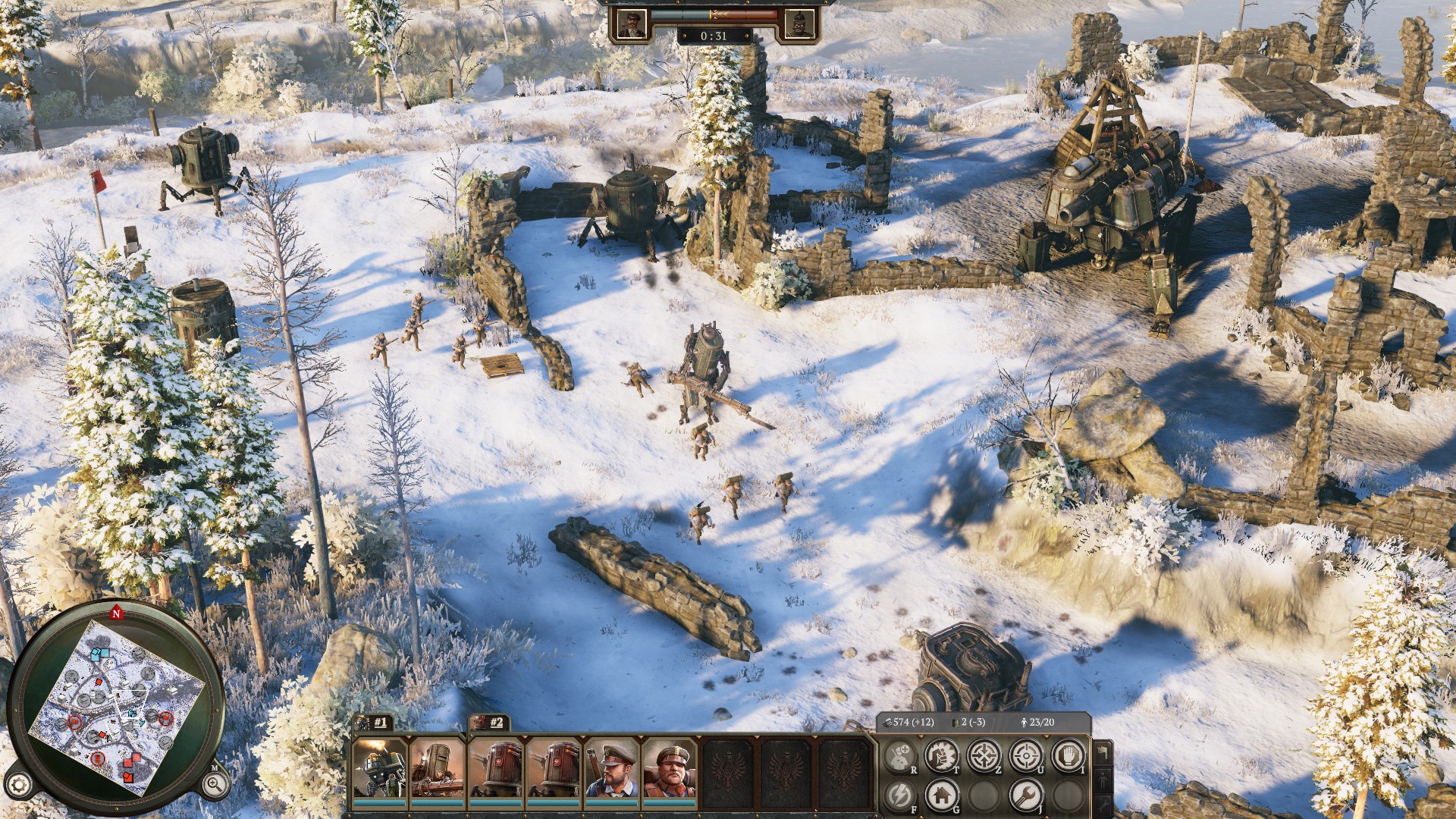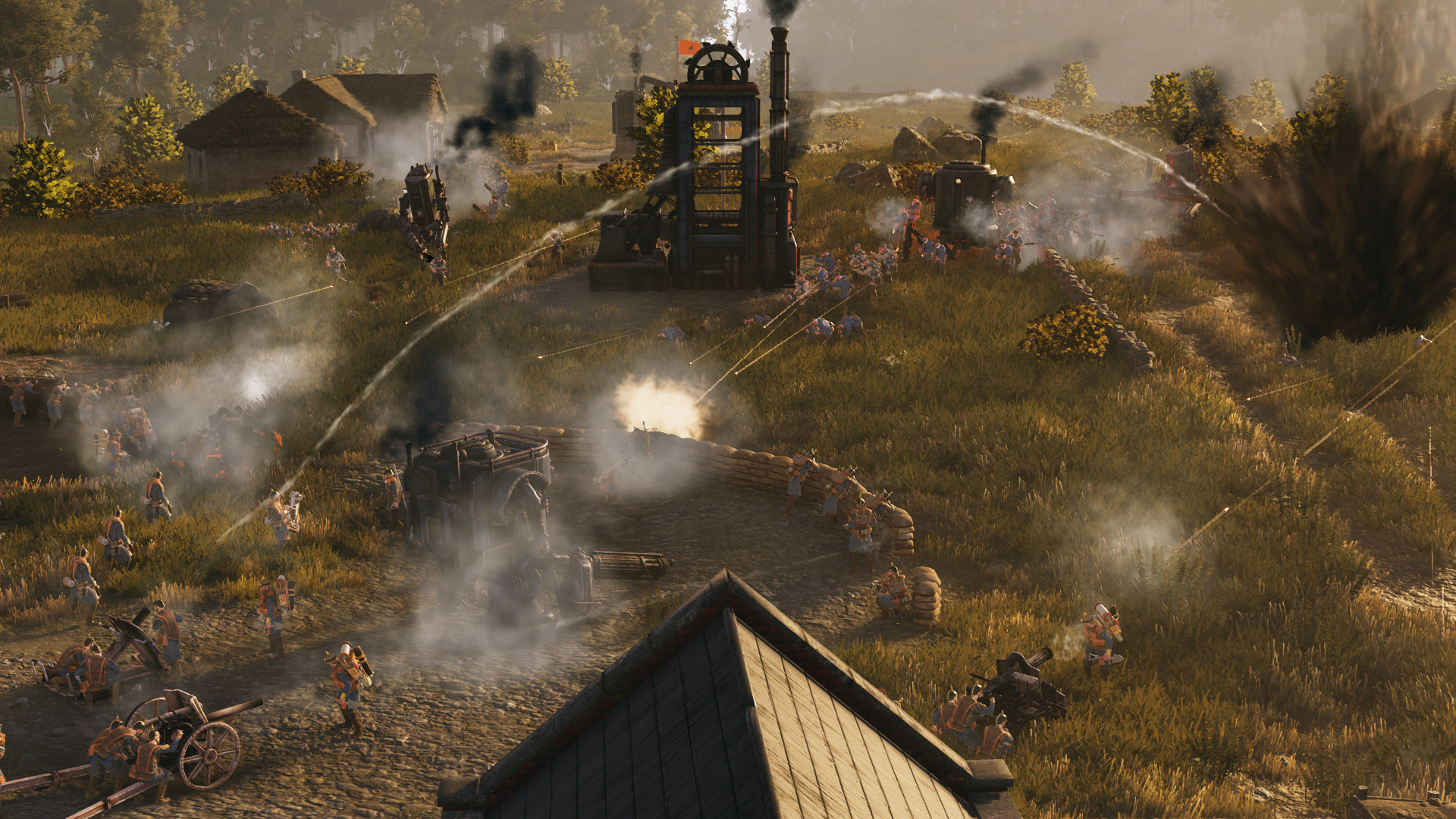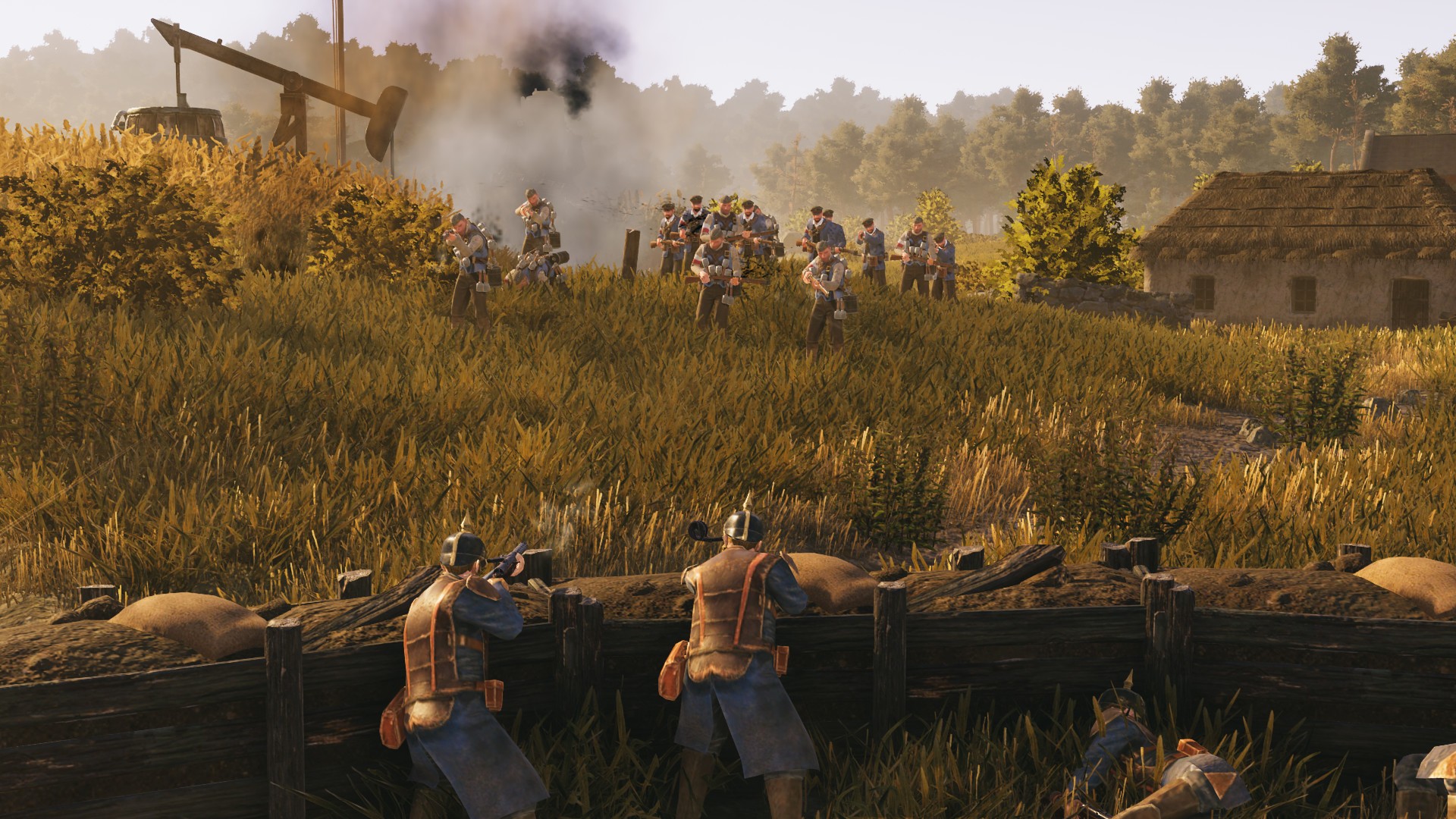
Iron Harvest is a game that ran an extremely successful Kickstarter campaign back in March 2018, where, despite having a goal of $450,000, it ended up raising a total of almost $1,300,000. The developers, KING Art Games, are mostly known for their The Book of Unwritten Tales series, but it seems that didn’t stop them from setting out to make such an ambitious RTS. Although the game itself is being made by this studio, the actual universe of Iron Harvest, also known as 1920+, comes from the mind of Jakub Rózalski, a polish artist whose art also originated the popular board game Scythe.
While the game takes place in a unique alternate history universe, Iron Harvest’s gameplay is undoubtedly inspired by classics such as Company of Heroes and Dawn of War. With that said, there’s also a lot of inspiration drawn from the dieselpunk and Steampunk genre, and the Polish-Soviet War, and so the world of Iron Harvest is pretty astounding as a whole. Both in terms of art-direction and world-building, the game is tremendously engrossing and believable. In Iron Harvest’s alternate version of history, after the Great War, there were three nations that saw themselves enveloped in yet another major conflict, the Polania Republic, the Rusviet Union, and the Saxony Empire. The war that was supposed to end all wars ended up not being the last, thanks to Nikola Tesla’s inventions, which, despite seeking to only work for the betterment of Humanity ended up becoming devastating weapons and sparking an arms race for which the nation could have the most powerful mechs in their army. It’s in this context that the game’s single-player campaign takes place, as players get to experience this version of history from three different angles.
Like most classic RTSes, Iron Harvest not only features 3 fully fledged single-player campaigns, but it also supports AI skirmishes, ranked and quick matchmaking in 6 maps, as well as 3 faction specific challenge scenarios where each faction must dig in and defend a set of objectives against overwhelming enemy waves. With that said, I pretty much only play RTS games for the campaign. The multiplayer side never appealed to me. In any case, you can also play the game in one of three difficulty modes, each made for a specific type of player. The easiest one is fit for people who only want to enjoy the story, then there’s the default experience mode, which strikes a good balance in terms of difficulty, and then there’s the hardest mode made for RTS veterans. Still, although I played on medium difficulty, I felt like the enemy AI was either hit or miss. While sometimes they’d hang back and try to attack my units with long-range units, other times it felt like they’d just throw whatever they had at my units, even going as far as having infantry right next to my mechs.

The campaigns feature fully voice-acted cutscenes between each mission, and there’s also plenty of dialogue during missions and sections with close-up camera angles that really give the game a cinematic feel. On that note, one thing that I really appreciate about Iron Harvest is the fact that you can choose to play the game either with English voice acting or with native voice acting for each of the factions. Despite not disliking the English voice acting, I played the game with the native voices because it simply makes the game much more immersive and convincing for me. However, there was one really annoying issue that I experienced throughout my whole time with Iron Harvest, which was the fact that any voice lines would only play on one side of my headphones, with that side being the side corresponding to where the unit speaking was located in relation to the camera. Even if I moved the camera around the sound would only play on one side, which is quite irritating since it creates a disconnect between what I’d see and what I could hear. Still, the sound design was also one thing that impressed me the most in Iron Harvest. Every single rifle or cannon shot sounds like it has the proper amount of weight to it, and the cannons from the biggest mechs and the artillery are extremely satisfying to use thanks to how daunting they sound.
Given the surprising focus on establishing a narrative that seamlessly stretches throughout the entire game, Iron Harvest does a great job in making its single-player experience feel quite memorable. Unlike a lot of RTS games, no two missions in Iron Harvest ever feel the same. Whether you’re escorting a train through enemy territory, infiltrating enemy positions and rescuing prisoners, saving civilians amidst a citywide conflict, or just flat out building up a base and amassing a large enough force to assault the enemy head on, it always felt like the game was throwing me into something new and challenging. Furthermore, if you’re not satisfied with that, there are also secondary objectives and challenges that you can complete in each mission.
In terms of gameplay, if you’ve played RTSes such as Company of Heroes or the Warhammer 40,000: Dawn of War series, then you should feel right at home. Iron Harvest is a real-time strategy game through and through, from base building, resource nodes, a half-baked cover system and squad-based infantry, Iron Harvest has it all. However, above all, Iron Harvest has mechs, big, heavy, tall, skinny, chunky, mechs. Each faction has their own set of mechs with very specific purposes, there are some mechs that are best for dealing with infantry, such as the flamethrower one from the Rusviet, but there’s also this one from Polania that is pretty much a walking bunker where you can garrison infantry and fire a mortar in a 360 degree angle while you hunker down. Each one counters a specific type of enemy unit, but the most expensive mechs of all three factions are pretty much a near unstoppable force on their own. Still, if you can flank them and land a rear shot, where mech armour is weaker, then you can certainly turn the tide in your favour. Now, if we’re being honest here, without the mechs, Iron Harvest would’ve probably been a pretty generic RTS, but thankfully it has plenty of them!

Although Iron Harvest features a decent amount of both infantry and mechs in all factions, the pace of each match follows the same routine. During early game you’ll use infantry to make up for the lack of resources to build mechs, by using it to strategically hold off the enemy and capture resource points, but once you have enough resources to start mass producing mechs, then the game becomes much slower. Once you pump out mechs out of your workshop, you will advance much slower throughout the map, since these are huge monolithic chunks of machinery that move extremely slowly when compared to infantry units. Trying to use any sort of tactics or building defences past this point will not prove very effective, as there’s nothing better than an overwhelming force of mechs that tower over city buildings and easily smash their way through them. With that said, all the factions felt like they were properly balanced, I never felt like I was either completely stomping on my opponent or getting wrecked.
Nonetheless, I just can’t get enough of building up my front lines with sandbags, barbed wire and mines, and then watch as the enemy comes towards me. Sometimes, this can lead up to some really intense and epic confrontations, and there’s nothing more that I enjoy in an RTS than sitting back and watching as the two mighty sides clash. By having infantry sitting behind cover, with gun emplacements next to them and mechs towering over them makes for quite the spectacle as there are projectiles and debris flying everywhere and the ground trembling with the impact of explosions. It just feels great to use the bigger mechs to simply walk over buildings and completely destroy them. It’s quite clear that a lot of care and thought was put into the game, from the most simple infantry animations to the ones that are a product of mechs leaving a path of destruction in their wake.
Like many, I used to be a huge fan of RTSes, but as time went on, the genre slowly faded away into obscurity. It was only earlier this year that I finally played the first RTS in years, Ancestors Legacy, which I thoroughly enjoyed, and while Iron Harvest grabbed my attention back when it was first announced a couple of years ago, I honestly didn’t expect it to be this good. The campaign is absolutely stellar, dramatic even, with the cutscenes, camera work and voice acting really elevating the game to a whole other level, and it keeps the quality throughout its 19 hours. The soundtrack is also on a whole other level, it’s simply one of the best that I’ve heard in recent years. Then, once you combine that with the classic RTS gameplay, you have the recipe for success. If you enjoy real-time strategy games for the single-player experience that they can provide, then you should definitely pick up Iron Harvest whenever you get the chance, and this is where I recommend you probably wait for a price drop if you’re hesitant. Ultimately, this was a tremendous surprise, and it’s unquestionably a game that I will remember for many years.
REVIEW CODE: A complimentary PC code was provided to Bonus Stage for this review. Please send all review code enquiries to press@4gn.co.uk.
Subscribe to our mailing list
Get the latest game reviews, news, features, and more straight to your inbox
Thank you for subscribing to Bonus Stage.
Something went wrong.
Iron Harvest Review
-
Gameplay - 8/10
8/10
-
Graphics - 8/10
8/10
-
Sound - 8/10
8/10
-
Replay Value - 8/10
8/10
User Review
( votes)Overall
Summary
If you enjoy real-time strategy games for the single-player experience that they can provide, then you should definitely pick up Iron Harvest whenever you get the chance.





